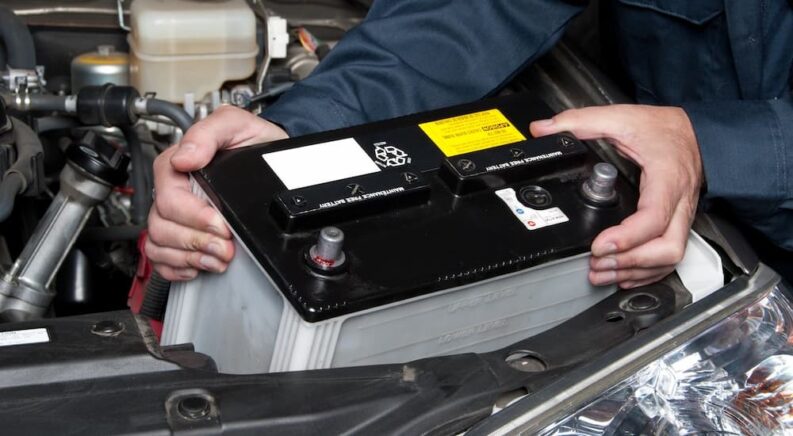As Heraclitus once said, the only constant in automotive technology is change. From the earliest Model T Ford to today’s selection of full-electric options, vehicles have come a long way over the last hundred-plus years. In that time, we’ve swapped out hand-operated crank starters for fully automated ignition systems, perfected the art of forced induction, and done away with those garish fins that used to trail seemingly every model off the assembly line. Direction injection was another game-changer, improving vehicle performance while increasing fuel efficiency by as much as 12%—but some components have resisted the pull of modernization.
Take the average vehicle’s electrical system, for example. For as long as most drivers can remember, a 12-volt DC setup has been the norm, providing vehicles with all the power they need to turn over the starter, light up the dashboard, and keep those tunes pouring from the radio. For most of automotive history, that’s been just fine, but things have started to change in recent years with the advent of hybrid and fully-electric vehicles. Given the role that electricity plays in powering not just comfort, entertainment, and safety accessories but the vehicle itself, 12 volts just wasn’t cutting it, leading automakers to introduce new, more powerful systems to supplement the traditional setup in electric vehicles.
This innovative new, all-electric approach is great news for the environment and wallet, but it can also carry some serious safety risks. That’s not to say that 12-volt systems couldn’t be a pain in their own right (just ask any driver who has made an unfortunate connection while installing a car battery) but, given the fact that they’re four times more powerful, 48-volt systems are a whole different ball game. If you’re a driver looking to educate yourself on the difference between the two, and the ins and outs of working with a 48-volt system, you’ve come to the right place. We’ll review some of the basics and review some important tips to keep you safe when you’re under the hood of your new EV or hybrid vehicle.

Risks
Let’s start off by defining “high voltage” and outlining some of the risks. As far as the auto industry is concerned, this term refers to any system that’s 60 volts and above; this means, technically speaking, 48-volt electrical systems aren’t “high voltage,” but for safety’s sake, they might as well be treated as such. When working on systems that are 60 volts and above, proper contact protection is required. This includes everything from insulated gloves and non-slip insulated boots to goggles and a “hot stick.” (This long, insulated pole is an important part of any tool kit when you’re working with high-voltage systems, as it can be used to pry a shocked person away from the source of the electricity.) We’d recommend using this same type of safety equipment when working on the 48-volt systems found in many of today’s EVs since that mere 12-volt difference is a little too close for comfort.
We don’t want to get too graphic but it might be useful to briefly outline some of the specific dangers associated with high-voltage currents. While the dangers of a 48-volt system shouldn’t be understated, it’s actually not the voltage that’s the issue—it’s the amperage. We’ll save you the electric engineering lesson, but, to make a long story short, varying degrees of electrocution are actually tied to the electrical current’s amperage—and a few other factors—while not so much its voltage. At doses of around ten milliamps (mA), you might experience a phenomenon known as repulsion, which can cause uncontrollable muscle movement. More severe muscular contractions can occur once moving into the 11-25 mA range; when this happens, you might involuntarily grip whatever is in your hand due to tetanic contractions, or you could let go of it altogether.
25 mA and up is where things start to get really dangerous; if a current of 25 mA passes through your thorax muscles, it could lead to asphyxia, which denies your body the oxygen it needs to survive. Currents of 30 mA and more can put a real strain on the heart and carry the risk of cardiac fibrillation. If this isn’t treated with specialized medical attention as soon as possible, it’s often fatal.
As we mentioned earlier, the strength of the current isn’t the only factor determining how much damage you’ll take from an electrical shock. The amount of resistance the current is met with, the path it takes through the body, and the duration of the shock all come into play, so never judge a potential shock risk by pure amperage alone.
High-Voltage Components
It’s important to take precautions when working on any part of your vehicle’s high-voltage electrical system, but first, you need to know where to look. The battery, electric motor, and power electronics make up the high-voltage components of a vehicle’s powertrain, while the quick-charge unit and onboard charger provide the vehicle with the charging infrastructure it needs to stay juiced up. Other high-voltage components include the DC-AC inverter, DC-DC converter, power distributor, compressor, and PTC heater. If you’re working on any of the components mentioned above, you’ll want to take extra precautions.
If those parts sound unfamiliar, or this whole task is starting to seem a little fraught with peril, take a moment to assess your comfort level. Here at CheckEngine we’re all about the DIY lifestyle…within limits. When working with high-voltage electrical systems like those found on many of today’s EVs and hybrid vehicles, sometimes it’s best to leave it to the professionals. That said, if you do think a high-voltage electric repair is within your wheelhouse, there are a few steps you need to take to ensure the safest experience possible. Before you work on any high-voltage electric components in your vehicle, you need to make sure it’s not connected to the battery.
Start by turning the ignition key to the off position and removing it from the ignition, and then go about clearing everything from within three feet of the vehicle itself. While you’re at it, remove your watch, jewelry, and any other metal objects from your body before putting on high-voltage protective gloves. Before you tackle the high-voltage battery, you’ll need to deal with the 12-volt battery under the hood, so remove the negative terminal from the battery and insulate it. Before you move on, use your disconnected 12-volt battery to calibrate your voltage test and make sure you can get an accurate reading before proceeding.
Once that’s done, you’ll want to locate the high-voltage battery and remove the service plug from the battery pack. After the battery is disconnected, the high-voltage electrical system will gradually begin to lose power. Take a few minutes to let it fully drain (the exact timeline can usually be found in your owner’s manual) before attaching the battery testing and taking another reading to ensure you get a reading of zero volts. Once you’ve ensured that there’s no dangerous voltage running through the vehicle, it’s not that much different from a regular old car repair.

Change Is Constant
With a little preparation, a lot of safety equipment, and a good health insurance plan, high-voltage electric system repairs are well within reach for most drivers. For the rest of us, there’s always your trusted local service station. We admire the confidence of any driver who would dive headfirst into an electricity-related repair, but there’s nothing wrong with sitting one out. Truth be told, DIY car repair is only going to become more difficult and specialized as our vehicles are designed to be smarter, more efficient, and more technologically advanced.
Not that long ago, many simple automotive repairs and maintenance tasks could be completed with nothing more than some rudimentary mechanical knowledge, a ratchet set, and a Haynes manual. These days you need to be well-versed in everything from electrical engineering to computer programming to whip a vehicle back into shape, which can be a major impediment for many drivers. That said, resources like YouTube, internet forums, and websites like CheckEngine can go a long way in demystifying these new, complex systems.

